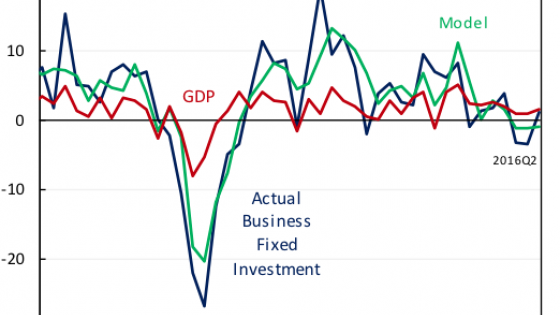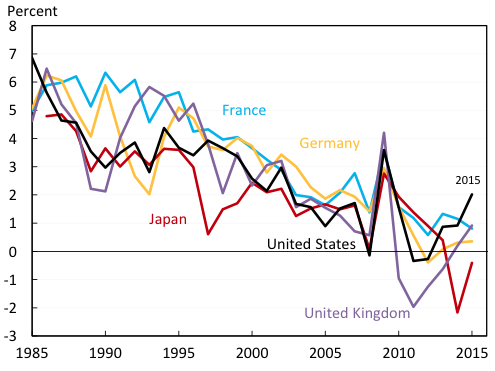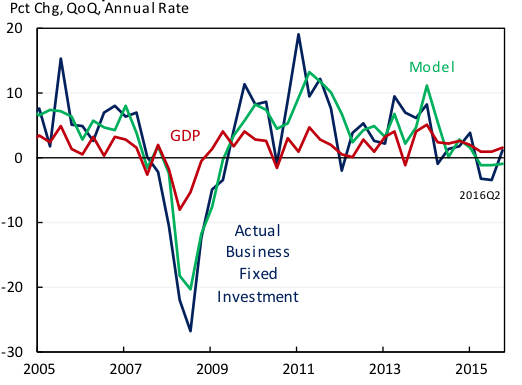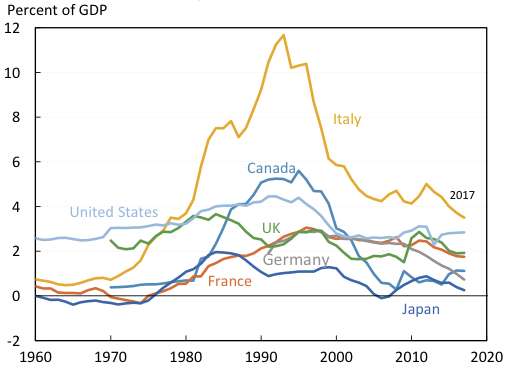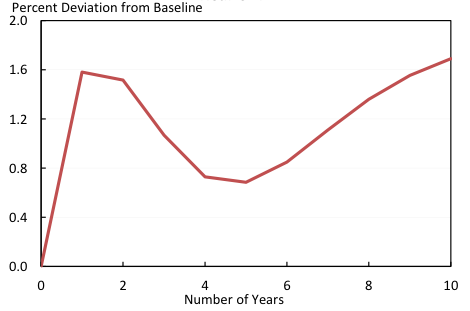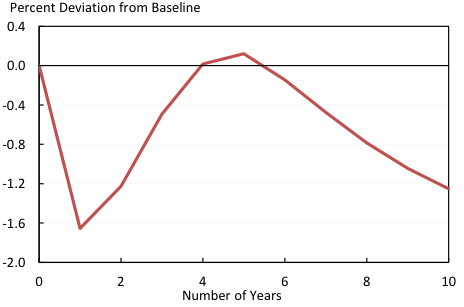A decade ago, the prevalent view about fiscal policy among academic economists could be summarised in four admittedly stylised principles:
- Discretionary fiscal policy is dominated by monetary policy as a stabilisation tool because of lags in the application, impact, and removal of discretionary fiscal stimulus.
- Even if policymakers get the timing right, discretionary fiscal stimulus would be somewhere between completely ineffective (the Ricardian view) or somewhat ineffective with bad side effects (higher interest rates and crowding-out of private investment).
- Moreover, fiscal stabilisation needs to be undertaken with trepidation, if at all, because the biggest fiscal policy priority should be the long-run fiscal balance.
- Policymakers foolish enough to ignore (1) through (3) should at least make sure that any fiscal stimulus is very short-run, including pulling demand forward, to support the economy before monetary policy stimulus fully kicks in while minimising harmful side effects and long-run fiscal harm.
Today, the prolonged aftermath of the Global Crisis, the increased realisation that equilibrium interest rates have been declining for decades and a better understanding of economic policy from the last eight years of experience have led the shift away from this ‘Old View’ of fiscal policy.1
Theory and evidence for the New View of fiscal policy
The New View of fiscal policy largely reverses the four principles of the Old View – and adds a bonus one.
- First, fiscal policy is often beneficial for effective countercyclical policy as a complement to monetary policy.
With low interest rates limiting the effectiveness of conventional monetary policy, central bankers and international organisations increasingly endorse the idea that monetary policy cannot, by itself, be fully effective and would benefit from supportive fiscal policy. The low real interest rate is not a new or temporary phenomenon. Its downward trend started in the 1980s in the advanced economies and, prior to the Global Crisis, was already below its historical average (see Figure 1).
Figure 1 Real ten-year benchmark rate in selected countries
Source: National sources via Haver Analytics.
A range of explanations have been advanced for this decline in interest rates, but regardless of the cause, the sustained and widespread decline of real interest rates indicates that they are unlikely to return to their pre-crisis expectations. (CEA 2015, Holston et al. 2016, Summers 2014, Teulings and Baldwin 2014).
In 2000, David Reifschneider and John Williams estimated that the zero lower bound would be constraining about 5% of the time in the US, with a mean duration of four quarters. However, the international experience since the Great Recession suggests that, if anything, this estimate was overoptimistic. A key assumption in this analysis was an equilibrium real federal funds rate of 2.5%, well above recent projections from the Federal Open Market Committee, whose estimates range from 0.5% to 1.8%. Consequently, the effective lower bound will likely constrain conventional monetary policy more than 5% of the time in the future (Dordal-i-Carreras et al. 2016).2 And while unconventional monetary policy can still operate, there is substantial controversy over its efficacy and side effects.
- Second, discretionary fiscal stimulus can be very effective and in some circumstances can even crowd in private investment. To the degree that it leads to higher interest rates, that may be a plus, not a minus.
In the immediate postwar decades, economists broadly supported fiscal stimulus (e.g. Blinder and Solow 1973). But much of modern academic macroeconomics has ranged from dismissive of any effect of fiscal policy on the macroeconomy (Barro 1974), to arguments that imply that additional debt can reduce confidence and hurt the economy (Ball and Mankiw 1995), to arguments that consolidations can actually be expansionary (Blinder and Yellen 2001, Alesina and Ardagna 2010).
However, an increasing body of evidence, pulled from both historical and recent data, has found that fiscal expansion can have large positive effects. On the revenue side, Romer and Romer (2010) examine exogenous tax changes in the US since WWII and find resulting multipliers as high as 3. On the spending side, studies that focus on historical exogenous (unpredicted) changes in US government expenditure find output multipliers ranging from 0.6 to 1.2 (Ramey and Shapiro 1998, Blanchard and Perotti 2002, Ramey 2011). Studies based on Federal defence spending associated with the Recovery Act detect multipliers over 1 in some scenarios (Nakamura and Steinsson 2014). Consumer-level microeconomic data from the 2001 and 2008 US tax credits show evidence that liquidity-constrained households spent a sizable fraction of that rebate (Parker et al. 2013).
When monetary policy is constrained, fiscal policy may be effective because monetary policy will not partially offset fiscal policy through interest-rate or exchange-rate channels. Fiscal policy could even crowd in additional private investment through its ability to stimulate growth (as implied by the accelerator model in Figure 2) and raise inflation expectations, thereby lowering interest rates (Hall 2009, Christiano et al. 2011, Woodford 2011). The reaction function of monetary policy is important, as some (e.g. Woodford 2011) have argued that a monetary authority that reverts to a Taylor-type rule during fiscal expansion will significantly reduce fiscal multipliers.
Figure 2 GDP and simple accelerator model of business fixed investment
Source: Source: Bureau of Economic Analysis, National Income and Product Accounts; CEA calculations.
- Third, fiscal space is larger than generally appreciated because stimulus may pay for itself or may have a lower cost than headline estimates would suggest and countries have more space today than in the past.
Arguments against fiscal stimulus have increasingly focused on the issue of fiscal space, stemming in part from an idea that irresponsible government spending caused Europe’s sovereign debt crisis. However, there is no correlation between countries whose debt-to-GDP ratio rose prior to the crisis and those that saw their sovereign spreads spike during 2011. The spikes in debt in places like Ireland and Spain were a result of the crisis than a cause (Shambaugh 2012).
The tendency today is toward excessive caution in the name of fiscal responsibility, when in fact growth associated with fiscal stimulus can improve fiscal sustainability. Effective fiscal stimulus may raise output faster than debt, reducing the debt-to-GDP ratio (DeLong and Summers 2012, Gaspar et al. 2016, OECD 2016). Changes in the debt-to-GDP ratio depend on two factors: (i) the difference between interest rates and the growth rate (strictly speaking, r minus g multiplied by the debt-to-GDP ratio); and (ii) the primary balance (the difference between revenue and non-interest spending). The larger the debt, the more changes in r – g dwarf the primary balance in determining debt dynamics. So policies that raise g without triggering concerns that raise r can be especially effective in improving sustainability.3
This argument seems to be consistent with financial market perceptions. For example, downgrades to many European sovereign debt ratings in the last eight years have come with warnings of growth prospects, not spending irresponsibility. And, in the US, nominal growth, not fiscal consolidation, has been critical for establishing debt sustainability (Hall and Sargent 2011).
Even to the degree that stimulus adds to the debt, ideas of optimal debt levels need to consider reduced future liabilities and persistently lower interest rates. For example, nearly three-quarters of advanced economies have smaller expected increases in pension and health spending between 2010 and 2030, comparing latest IMF projections to those five years ago (IMF 2011, 2016b). Moreover, permanently lowered interest rates increase the threshold of sustainable government debt. (Elmendorf and Sheiner 2016).4 Indeed, major advanced economies today have relatively low interest payments as a share of GDP, as shown in Figure 3.
Figure 3 Net interest payments on government debt
Source: Organisation for Economic Co-operation and Development.
- Fourth, more sustained stimulus, especially if it is in the form of effectively targeted investments that expand aggregate supply, may be desirable in many contexts.
The New View of fiscal policy, based on the empirical and analytical observations above, places more weight on sustained fiscal policy, especially through effectively allocated investments. Sustained fiscal policy may be necessary because the global economic climate is showing symptoms of persistently inadequate demand dragging on growth and inflation. It can play a critical role not only in demand but also in expanding productivity and aggregate supply going forward. IMF researchers found that a permanent increase in government investment of 1% of GDP increases growth through permanently increasing investment and consumption. Furthermore, fiscal spending creates future fiscal space through increasing government revenue and reducing the debt-to-GDP ratio, as shown in Figures 4a and 4b
Figure 4a Effect of permanent increase in government investment on real GDP
Figure 4b Effect of permanent increase in government investment on government debt-to-GDP ratio
Source: Gaspar et al. (2016).
Investments in innovation may have higher long-run payoffs, with the IMF finding that an expansion of research and development (R&D) with an annual fiscal cost of 0.4% of GDP can raise the long-run output level by 5% in advanced economies (IMF 2016a).
- Finally, there may be larger benefits to undertaking coordinated fiscal action across countries.
In a world characterised by inadequate demand and low interest rates, shocks to demand can spill more swiftly and strongly across borders (Eggertsson et al. 2016). Normally, a demand contraction in one country will spill into others through shrinking imports. That country’s currency will depreciate, giving their exports an advantage, and resulting in a current account surplus. The demand shock affects the other countries, but it need not directly affect output. If monetary easing is possible, those countries can offset the reduction in demand, which among other things shifts exchange rates and tempers the movements of the current account.
However, at the effective lower bound, monetary policy cannot offset policies in foreign countries that create large current account surpluses. Thus, a fiscal contraction abroad spills directly into GDP. Note, the demand shock from fiscal consolidation has likely been significant in the Eurozone, where the Single Market makes these spillovers more direct and members cannot rely on the mitigating effects of exchange rates and monetary policy.
Fiscal expansions can have large positive spillovers, especially when they are internationally coordinated. A fiscal expansion can increase demand in both the domestic economy and the economies of its trade partners. To the extent that business investment has been held back by low GDP growth, a coordinated expansion could also lift investment, further buoying the world economy.
IMF researchers find that countries or regions engaging in an individual permanent fiscal expansion worth 1% of GDP face rising debt levels. However, when stimulus is coordinated, additional growth rose in each region, cumulating to 2.3% in additional global growth, while individual debt-to-GDP ratios fell. This strengthens the case for mutual reliance on fiscal policy that undergirds, for example, the G20’s inclusion of fiscal policy as one of three tools for strengthening growth (G20 2016).
The New View in practice in the US and the Eurozone
Economic opinion, including among both researchers and policy-oriented bodies, is increasingly shifting towards this New View of fiscal policy. At the beginning of the financial crisis, the US acted in 2008 to institute discretionary countercyclical fiscal policy. From 2009 to 2012, the US passed over a dozen expansionary fiscal measures. Together with automatic stabilisers, the total fiscal stimulus averaged 4% of GDP over that period.
However, the US’ automatic fiscal stabilisers are relatively weak compared to other countries’ and should be strengthened, including areas like unemployment insurance.
In contrast, Europe has strong automatic stabilisers, with taxes and social transfers softening the effect of the recession on both growth and income inequality – at least to the degree that policymakers allow them to function (OECD 2013). It is the European institutional structure –which reflects the Old View of fiscal policy – that seems to amplify shocks rather than dampen them (Shambaugh 2012). Indeed, the ECB has the sole responsibility of managing macroeconomic policy at the Eurozone level. Thus, monetary policy is the only tool to address shocks that affect the currency union or have important spillovers. Furthermore, the Stability and Growth Pact can compel deficit reduction, but not fiscal expansion. This resulted in budget policies interacting with domestic financial rescues during the sovereign debt crisis, such that countries in financial crisis were required to make fiscal cuts which weakened banks and hence the budget even more. There is ample evidence that these cuts deepened these countries’ recessions.
Euro-wide countercyclical fiscal policy – such as unemployment insurance – would respond optimally to the large spillovers of country-level fiscal policy, reflect the greater fiscal space of the European Union, and provide a mutual insurance system against shocks that disproportionately affect certain areas.
Good policy is dependent on the country and the circumstances, but the thinking among economists and research by international institutions is moving towards more discretionary fiscal policy, while policymakers are still too often biased towards less. A better understanding can help remedy some of that gap, but it is no substitute for the institutional changes needed to underpin such a change.
Author's note: This is a condensed version of remarks delivered on 5 October 2016 at the Global Implications of Europe’s Redesign conference in New York.
References
Alesina, A and S Ardagna (2010), “Large Changes in Fiscal Policy: Taxes versus Spending.” Tax Policy and the Economy 24: 35-68.
Ball, L and N G Mankiw (1995), “What Do Budget Deficits Do?” Federal Reserve Bank of Kansas City, Economic Policy Symposium – Jackson Hole: 95-119.
Barro, R J (1974), "Are Government Bonds Net Wealth?" Journal of Political Economy 82 (6): 1095-1117.
Blanchard, O and R Perotti (2002), “An Empirical Characterization of the Dynamic Effects of Changes in Government Spending and Taxes on Output.” Quarterly Journal of Economics 117 (4): 1329-1368.
Blinder, A S (2006), “The Case Against the Case Against Discretionary Fiscal Policy.” In Richard W. Kopcke, Geoffrey M.B. Tootell and Robert K. Triest, eds., The Macroeconomics of Fiscal Policy. Cambridge, MA: MIT Press.
Blinder, A S (2016), “Fiscal Policy Reconsidered.” The Hamilton Project. The Hamilton Project Policy Proposal 2016-05.
Blinder, A S and R M Solow (1973) “Does Fiscal Policy Matter?” Journal of Public Economics 2 (4): 319-337.
Blinder, A S and J L Yellen (2001), The Fabulous Decade: Macroeconomic Lessons from the 1990s. New York: Century Foundation Press.
Christiano, L, M Eichenbaum, and S Rebelo (2011), “When is the Government Spending Multiplier Large?” Journal of Political Economy 119(1): 78-121.
Council of Economic Advisers (CEA). 2015. “Long-Term Interest Rates: A Survey.” Report.
DeLong, J B and L H Summers (2012), “Fiscal Policy in a Depressed Economy.” Brookings Papers on Economic Activity 43 (1): 233-297.
Dordal-i-Carreras, M, O Coibion, Y Gorodnichenko, and J Wieland (2016), “Infrequent but Long-Lived Zero-Bound Episodes and the Optimal Rate of Inflation.” Annual Review of Economics 8 (1).
Eggertsson, G B, N R Mehrota, S R Singh, and L H Summers (2016), “A Contagious Malady? Open Economy Dimensions of Secular Stagnation.” NBER Working Paper No. 22299.
Elmendorf, D and L Sheiner (2016), “Federal Budget Policy with an Aging Population and Persistently Low Interest Rates.” Hutchins Center on Fiscal and Monetary Policy Working Paper No. 18. The Brookings Institution.
G20 (2016), “Communiqué: G-20 Finance Ministers and Central Bank Governors Meeting.” July 23-24.
Gaspar, V, M Obstfeld, and R Sahay (2016), “Macroeconomic Management When Policy Space is Constrained: A Comprehensive, Consistent and Coordinated Approach to Economic Policy.” IMF Staff Discussion Note.
Goodfriend, M (2016), “The Case for Unencumbering Interest Rate Policy at the Zero Bound.” Federal Reserve Bank of Kansas City, Economic Policy Symposium – Jackson Hole.
Hall, R E (2009), “By How Much Does GDP Rise if the Government Buys More Output?” Brookings Papers on Economic Activity 40 (2): 183-249.
Hall, G J and T J Sargent (2011), “Interest Rate Risk and Other Determinants of Post-WWII US Government Debt/GDP Dynamics.” American Economic Journal: Macroeconomics 3 (3): 192-214
Holston, K, T Laubach, and J C William (2016), “Measuring the Natural Rate of Interest: International Trends and Determinants.” Federal Reserve Bank of San Francisco Working Paper No. 2016-11.
IMF (2011), “Shifting Gears: Tackling Challenges on the Road to Fiscal Adjustment.” Fiscal Monitor, April 2011.
IMF (2014), “Chapter 3: Is It Time for an Infrastructure Push? The Macroeconomic Effects of Public Investment.” World Economic Outlook, October 2014.
IMF (2016a), “Chapter 2: Fiscal Policies for Innovation and Growth.” Fiscal Monitor, April 2016.
IMF (2016b), “Debt: Use It Wisely.” Fiscal Monitor, October 2016.
Nakamura, E and J Steinsson (2014), “Fiscal Stimulus in a Monetary Union: Evidence from US Regions.” American Economic Review 104 (3): 753-792.
OECD (2013), Crisis Squeezes Income and Puts Pressure on Inequality and Poverty in the OECD. Report.
OECD (2016), Interim Economic Outlook: Global Growth Warning: Weak Trade, Financial Distortions. Report.
Parker, J A, N S Souleles, D S Johnson, and R McClelland (2013), “Consumer Spending and the Economic Stimulus Payments of 2008.” American Economic Review 103(6): 2530-53.
Ramey, V A (2011), “Can Government Purchases Stimulate the Economy?” Journal of Economic Literature 49 (3): 673-685.
Ramey, V A (2016) “Macroeconomic Shocks and Their Propagation.” NBER Working Paper No. 21978.
Ramey, V A and M D Shapiro (1998), “Costly Capital Reallocation and the Effects of Government Spending.” Carnegie-Rochester Conference Series on Public Policy 48: 145-194.
Reifschneider, D and J C Williams (2000), “Three Lessons for Monetary Policy in a Low Inflation Era.” Journal of Money, Credit, and Banking 32 (4): 936-966.
Romer, C D and D H Romer (2010), “The Macroeconomic Effects of Tax Changes: Estimates Based on a New Measure of Fiscal Shocks.” American Economic Review 100 (3): 763-801.
Shambaugh, J C (2012), “The Euro’s Three Crises.” Brookings Papers on Economic Activity 43 (1): 157-231.
Summers, L H (2014), “U.S. Economic Prospects: Secular Stagnation, Hysteresis, and the Zero Lower Bound.” Business Economics 49 (2): 65-73.
Taylor, J B (2000), “Reassessing Discretionary Fiscal Policy.” Journal of Economic Perspectives 14 (3): 21-36.
Teulings, C and R Baldwin (eds) (2014), Secular Stagnation: Facts, Causes and Cures. London: Centre for Economic Policy Research
Williams, J C (2016), “Monetary Policy in a Low R-Star World.” Federal Reserve Bank of San Francisco Economic Letter No. 2016-23.
Woodford, M (2011), “Simple Analytics of the Government Expenditure Multiplier.” American Economic Journal: Macroeconomics 3 (1): 1-35.
Endnotes
[1] For the Old View, see Taylor (2000). For some papers consistent with the New View, see IMF (2014), OECD (2016), DeLong and Summers (2012), and Blinder (2016). Of course, what I describe as the Old View was not a consensus position among all academic economists (see, for one example, Blinder 2006).
[2] Changes to monetary policy rules could affect the frequency with which the effective lower bound is binding (Goodfriend 2016, Williams 2016). But my argument applies to the degree that these policy rules have not changed; to the degree that changing them is costly, so more active fiscal policy could obviate the need to incur those costs; or to the degree that, even with the new rules, monetary policy still has limitations or side effects.
[3] Some have argued that higher growth has only a limited effect on fiscal sustainability because it automatically leads to higher pensions and greater spending in other areas (for example, faster growth could raise wages more quickly, increasing the cost of providing government-funded healthcare). But even for pensions, the elasticity of present-value spending with respect to growth is considerably less than one – because of lags in when benefits adjust – and pensions are just a portion of overall government spending. So only a portion of the additional revenues associated with the higher growth rate would be offset by the additional spending it triggered
[4] Declines in expected growth rates lower the optimal stock of government debt. But interest rate expectations have come down considerably more than growth expectations, consistent with the fact that interest rate forecasts had a large, systematic bias towards being too high for several decades while growth forecasts were generally unbiased.
